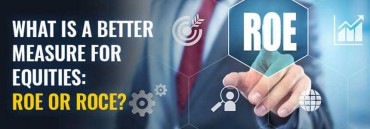DEFINITION of ROCE and ROE
ROCE and ROE are the financial metrics on capital employed and on equity.
WHAT IT IS IN ESSENCE.
They are valuable tools to measure a company’s operational efficiency and the resulting potential for future growth in value. It is the best to use them together for more complete evaluation of its financial performance.
ROCE is calculated by dividing a company’s earnings before interest and tax ( EBIT) by its capital employed. In a ROCE calculation, capital employed means the total assets of the company with all liabilities removed.
ROCE = Earnings before interest and taxes (EBIT) ÷ Capital employed
HOW TO USE
By using ROCE, traders and analysts can get a better idea of how efficiently a company is using its capital. Two companies with similar earnings and profit margins may have very different returns, they look similar on the surface but one of them is better in spending its capital.
Analysts may use ROCE as a means of performance trend analysis for a company. In the majority of cases, an increasing ROCE ratio implies strengthening long-term profitability.
ROE is the percentage expression of a company’s net income because it returns as a value to shareholders.
ROE grant investors and analysts an alternative measure of the company’s profitability and calculates the efficiency with which a company generates profit.
This is the equation:
Return on equity = Net income ÷ Shareholders’ equity
The weakness of ROE is the fact that a disproportionate level of company debt results in the smaller base amount of equity, thus producing a higher ROE value off even a very modest amount of net income. It is always best to measure ROE value in relation to other financial efficiency measures.
In fact, the best way to evaluate the company is to look at the ROE and the ROCE combined. When the ROCE is greater than the ROE then it means that the company has made intelligent use of debt to reduce its overall cost of capital. But there is also a counter view to that. When the ROCE is greater than the ROE, it means that debt holders are being rewarded better than the equity shareholders. That is not good news for equities.

